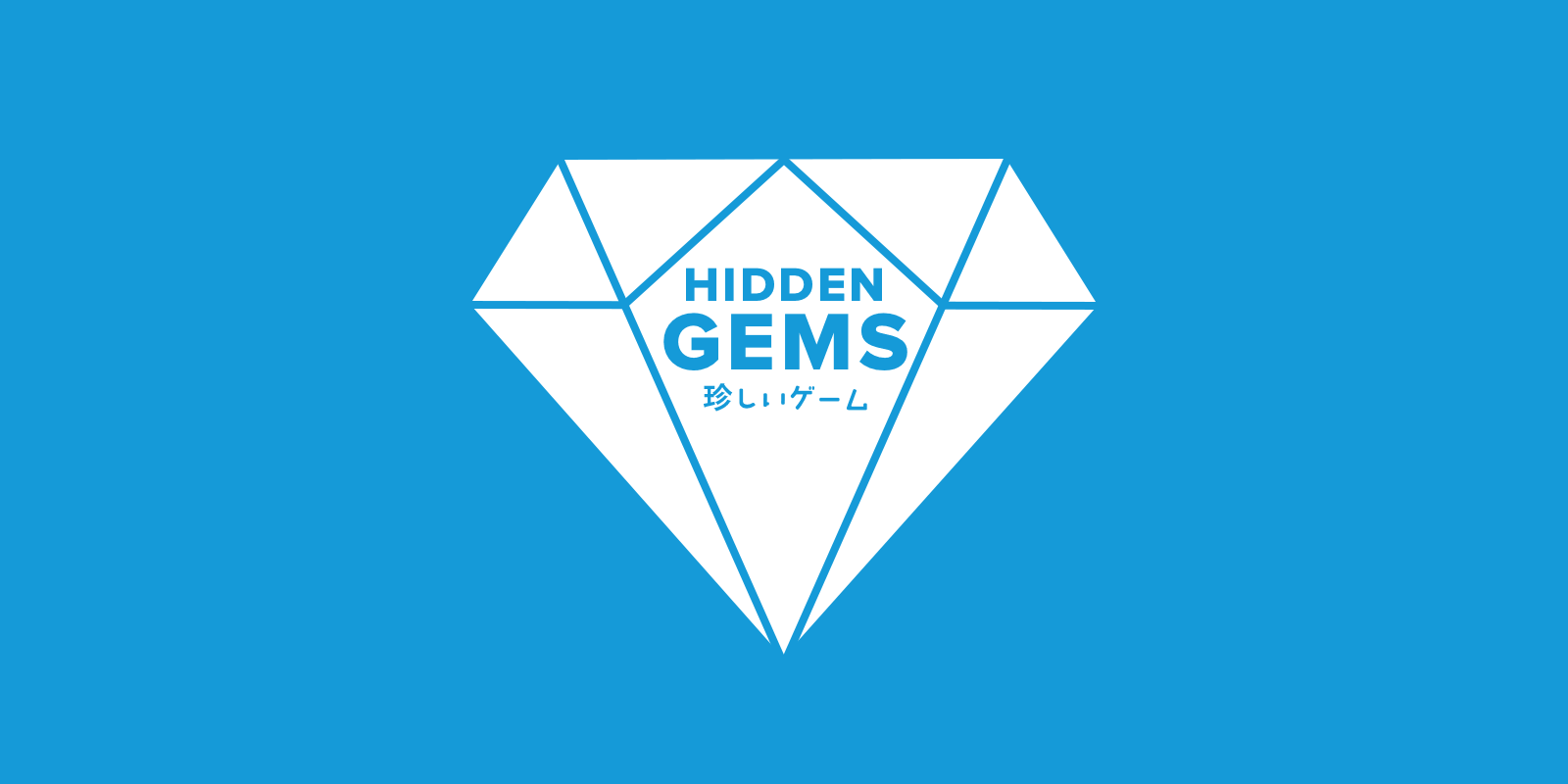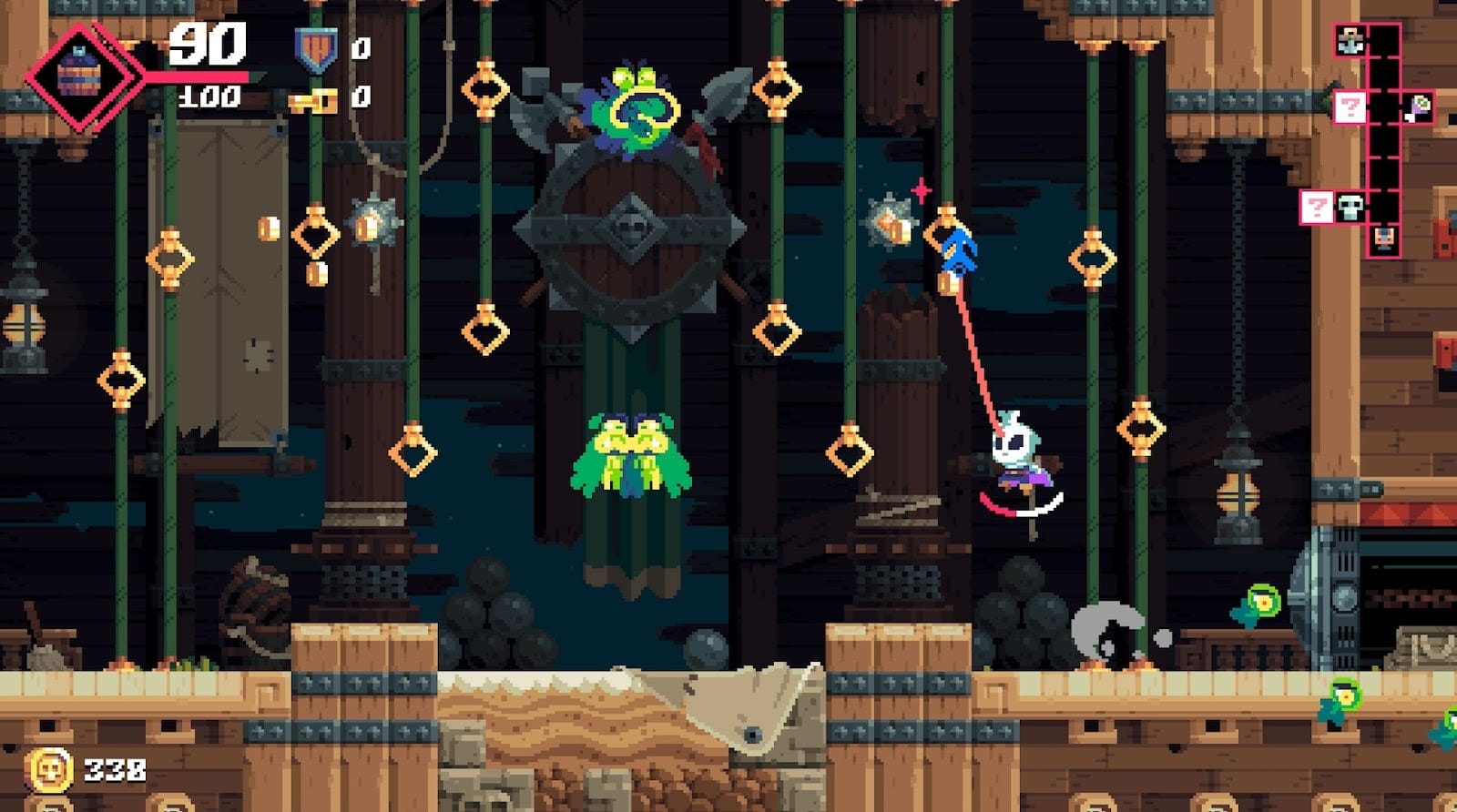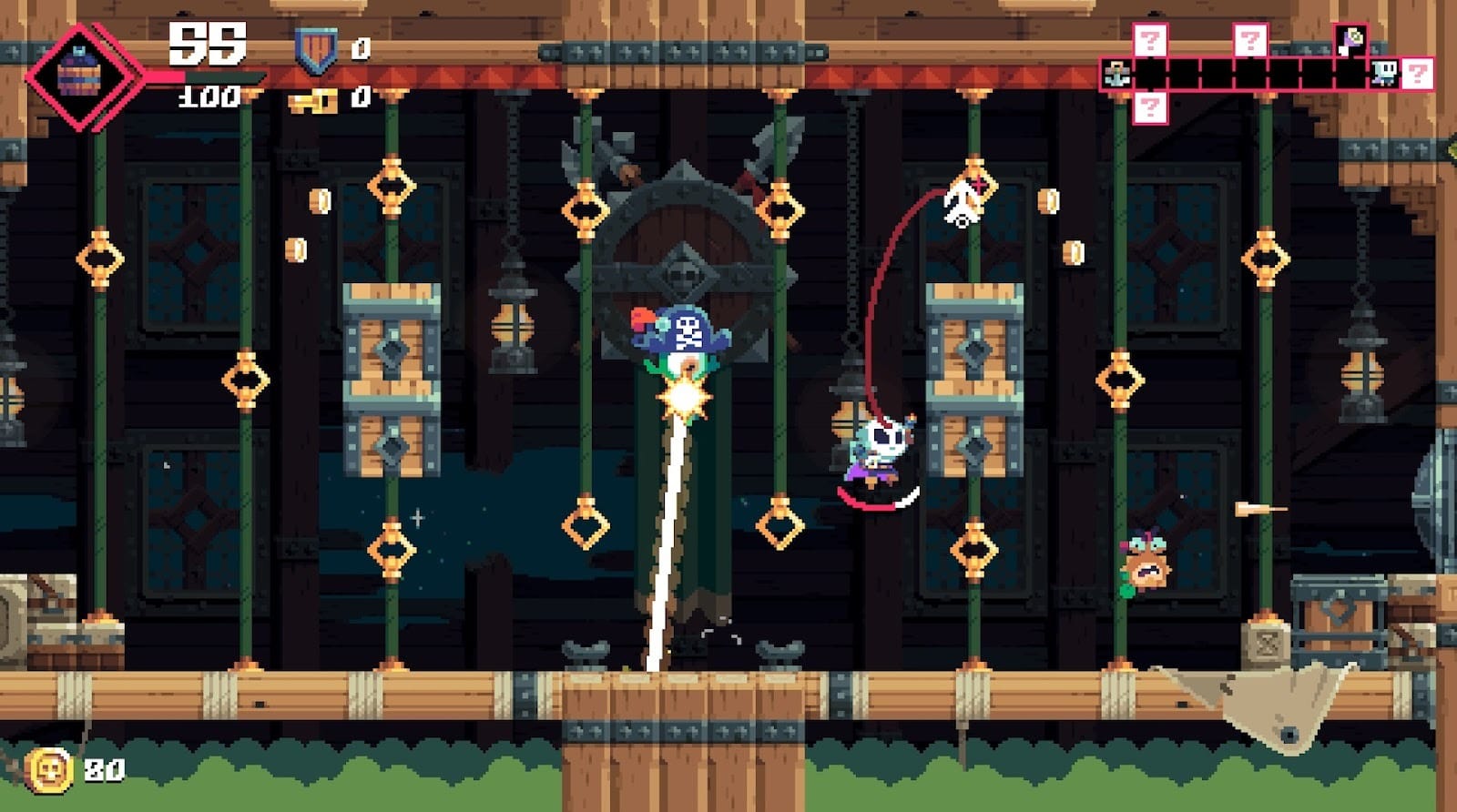Hidden Gems of Game Design Vol 41
Unearthing Tactical Nexus, Flinthook, Tiny Terrors, Tyranny, and Tarzan: Return to the Jungle

Plenty of amazing games go unnoticed and are not played widely for various reasons. Maybe it’s a diamond in the rough, or the marketing wasn’t there, or it could be a game ahead of its time. For this monthly series, I’ve asked my fellow writers on SUPERJUMP to pick a game they think is deserving of a chance in the spotlight. Please share your favorite hidden gems in the comments.
Josh Bycer
Tactical Nexus (2019)

This month, we turn to one of the most niche of the niche games. Tactical Nexus is a game designed by, and for, every tactical RPG sicko out there who has ever thought to try and master one of these games.
Are you someone who:
- Has taken a character to level 9999 in Disgaea?
- Has not only learned, but broken, an SRPG?
- Is looking for a game that has at minimum 1000 hours of gameplay?
If you answered yes to any of those points, then this is the game for you. Tactical Nexus is a Puzzle RPG in a similar style to Desktop Dungeons. The idea is that you must conquer a stage by figuring out the exact order of items to pick up and enemies to fight. Where the challenge comes in is that every stage is made up of multiple maps, with enemies and items strewn about. Fighting stronger enemies early can net you more experience, allowing you to level up, but if you take too much damage, then you won’t survive to the end.
Multiple keys unlock different routes, and you must figure out which routes to take, given what you have in a level so far. All combat is handled simply by bumping into the enemy and letting the stats do the talking.
After a level is over, you are graded on how much of it you managed to clear and on finding bonus score items hidden behind the harder gates. The reason why this matters is what takes Tactical Nexus’ gameplay into overdrive. With Desktop Dungeons, while there was meta progression with unlocking new characters and items, the character’s progression always resets to 0. Here, the meta layer allows you to permanently boost your starting stats – enabling you to fight enemies more easily, take on harder fights earlier, or access the many harder gates that you couldn't before.

The game only tracks your highest score per stage – if you want more juicy rewards, you’ll need to play better. And yes, all these upgrades carry across all stages. The different levels start out being balanced around having no upgrades, but you will eventually need those boosts if you have any hope of continuing.
Tactical Nexus’ MO is about quality over quantity; it’s not about giving you hundreds of stages to play, but stages that take a long time to master on top of the meta progression.
The developers understand that their game won't be a mainstream success, and have factored that into their monetization structure. The first two chapters of the game are 100% completely free to play, and you can easily get dozens of hours just out of those two alone. If you want more, there are multiple chapters available as DLC that add more challenge, new mechanics, and more meta progression. The developers have gone on record stating that they will never put their DLC on sale, with the idea that the DLC is meant for the hardcore fans who want more.
This is the perfect game for the Hidden Gems series, as most of you reading this probably have no idea that it even exists. It is not for everyone, but if you fall into the highly specific group that wants this kind of game, I hope you enjoy your next obsession.

B. Cantrell
Flinthook (2017)
Lately, I’ve been grappling through the galaxy with Flinthook, and it didn’t take long for this roguelite to hook me in. Another hidden gem from Montreal’s Tribute Games (hot off last month’s Steel Assault), it casts you as a masked space pirate armed with an anchor hook, plasma pistol, and time-slowing belt, raiding wooden spaceships for randomised loot. The snappy controls give you instant agility, making it feel like you’re a tiny pirate Spider-Man zipping through zero-gravity galleons.
Swinging through procedurally generated levels, fighting bandits, and hoovering up treasure is the order of the day here. You latch onto golden rings and ping pong around enemies and traps, with a generous aim assist that lets you flow from ring to ring without touching the ground. Combat blends with movement as the hookshot crosshair doubles as a blaster reticle, so you can fire in any direction mid-swing. Slowing time with the Chrono Belt to slip between lasers, blasting foes, and grappling out feels super fluid and satisfying.
True to its roguelite roots, Flinthook delivers an addictive loop of looting and leveling up after death. Each run is a fresh gauntlet of gold, enemies, traps, and surprises. One moment you’re dodging spike balls and laser beams, the next you’re dueling mutant buccaneers. Cracking open chests and crates is super satisfying as coins burst out, just like smashing up urns on a Hades run. Flinthook passes the pottery test with flying colours.

As with any good roguelite, you start lightly equipped and grow stronger through steady meta-progression. Treasure and experience unlock perk cards and permanent upgrades that boost health, extend slow motion, or enhance attack power. It nicely captures that ‘one more run’ feeling, where even after a sudden defeat, you’re eager to jump back in. I died plenty early on, but I never felt like quitting. The responsive controls turn every setback into a lesson, and finally conquering a brutal room or boss feels genuinely rewarding. Using that right trigger to fire the hook shot is just really addictive.
Flinthook’s fluid pixel-art and catchy chiptune soundtrack capture the spirit of the 16-bit era while layering in modern design touches that add depth and replayability. It reminds me most of Flying Oak’s ScourgeBringer, with its classic roguelite map grid and flowing, omnidirectional movement that keeps you in constant motion. Released in 2017 on Steam, consoles, and later Switch, Flinthook slipped under the radar despite earning solid reviews, likely overshadowed by the wave of major releases that made 2017 one of gaming’s all-time great years. Regardless, Flinthook remains an overlooked gem that deserves another chance to shine.

Priya Sridhar
Tiny Terrors (2025)
As I was trolling Steam for Halloween-themed games, Tiny Terrors popped up as a free-to-play new release. The art style matched what I like, so I started playing.
Tiny Terrors is hard. You play as a ghost teaming up with a jack-o-lantern to collect candy amid hostile monsters and spirits. Rather than fighting or jumping, you have to strategize to dodge everything and everyone coming your way while grabbing candies. It’s a case where going in circles is a good idea. Though I won a few times, more times my ghost got their candy stolen. The replay value was fairly high as a result.
The animation is gorgeous with apropos background music. I hope the developer, Shiromi, has other games in the pipeline.
Julia Hu
Tyranny (2016)

Tyranny is a 2016 CRPG developed by Obsidian Entertainment and published by Paradox Interactive. Though both developer and publisher are household names among gamers, this particular title tends to be the forgotten child on their resumes. This is a shame because Tyranny offers such a unique premise among RPGs, as it is one of the rare games that lets players indulge in being the bad guy.
The game opens with our player character, a Fatebinder serving the mysterious god-emperor Kyros, being tasked with crushing a rebellion in a conquered land while navigating the conflict between two bickering factions, the Scarlet Chorus and the Disfavored. Unlike most RPG protagonists, our Fatebinder is not some no-name warrior but starts as a high-ranking officer in Kyros' army, capable of invoking an Edict of Kyros (a magical weapon of mass destruction that only Kyros can deploy) as a way to both channel Kyros’ authority and as a threat to achieve Kyros’ aims.
Along the way, we enjoy classic CRPG mechanics such as recruiting a colorful cast of companions, managing their gear, seeing their interactions, and making impactful decisions that change the story. We ultimately choose whether to ally with the Scarlet Chorus or the Disfavored as their war escalates (or neither and ally with the rebels themselves!). Then, after a plot twist, we choose how we manage the resulting conflict with the other Archons and potentially Kyros themself. These dramatically branching choices make multiple playthroughs of Tyranny feel like wholly different stories.

Yet, I think one reason why Tyranny has been underappreciated is that the game's plot feels awkwardly unfinished. As engaging as the game's story and worldbuilding is, Tyranny feels like the middle installment of a trilogy. The game opens with a retrospective text sequence, similar to Mass Effect 2 or 3’s, asking about your Fatebinder’s key decisions during Kyros’ unseen past campaign, with these answers determining the starting state of the world and its factions for the playthrough. The ending of the game is jarringly abrupt, wrapping up with a narrated summary of the wider consequences of our choices on the state of the world and Kyros. As one gamer aptly said, Tyranny feels "more like a proof of concept than a game."
We can only guess why the game was made in this rushed, incomplete state and then barely marketed. A potentially morally gray game in a niche genre would point to a low sales forecast, which likely impacted the amount of funds Obsidian had to work with. Whatever the reason, no plans for a sequel have followed in the nine years since launch.
Even so, I greatly enjoyed my 70+ hours spent completing all story paths in Tyranny. I hope the industry will continue taking creative risks and making experiences for the moments when gamers want to fantasize about not being the hero.
Anonymous
Tarzan: Return to the Jungle (2002)

Tarzan: Return to the Jungle built upon the foundation of its 1999 Game Boy Color predecessor with combat, improved character sprites, and stronger backgrounds. His acrobatic abilities grew, bringing activities like tree surfing into the fold.
While the Game Boy Advance game still had the film star collect bananas, they were no longer essential to beat levels. Instead, objectives ranged from stampeding boars and mining cart hops to finding dinosaur eggs. Tarzan was a joy to control, with his love for bananas taking him on sprints, slides leading to leaps, and vine swinging into vibrant water pools.
The platforming segments tested your timing and attention to detail, with vines often concealed just out of sight. Foes included beehives, leopards, and hogs that looked like The Lion King’s Pumbaa.
I fell in love with Return to the Jungle’s playgrounds. With vivid colors, gorgeous backgrounds, and the occasional instant-death obstacle, I enjoyed exploring every level for collectibles. The deep water swimming areas, filled with secret sections, were particularly memorable.
If you tapped the L-button, Tarzan let out a mighty scream or a scrawny squeak, depending on how old he is in-game. Doing so near statues brought jungle creatures to your aid, bringing an elephant to clear a path or an eagle to lift you to your next objective.
Crash Bandicoot and Mario indeed got more creative with their levels and mechanics. But if you loved watching the jungle man’s exploits on the big screen, you’d have a great time with Return to the Jungle.


